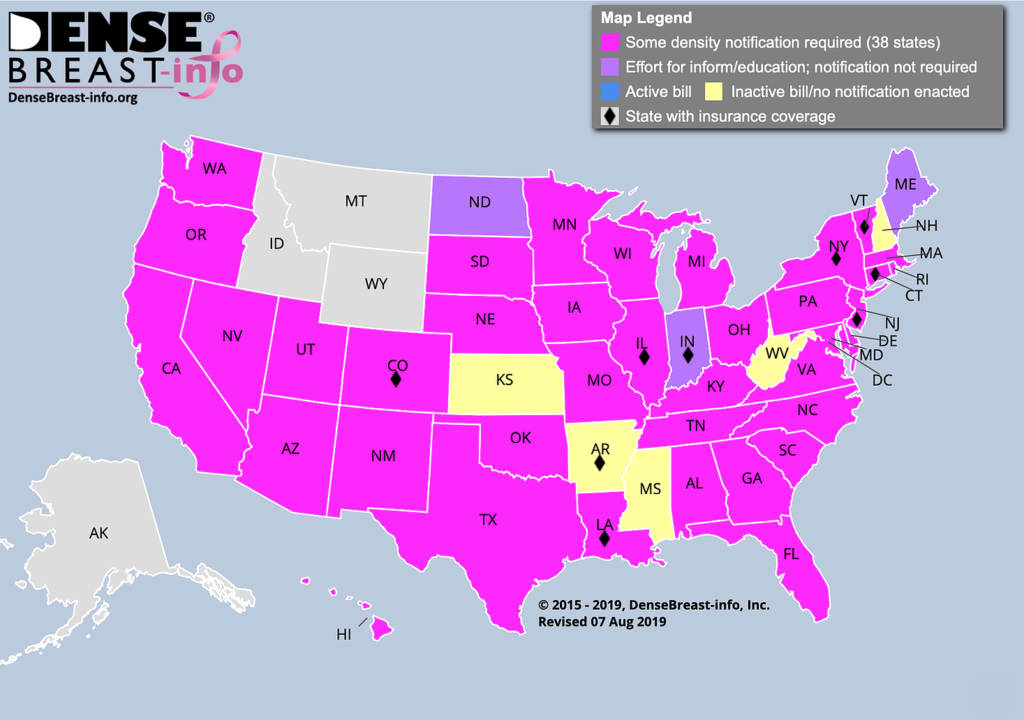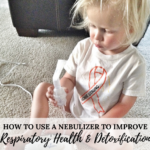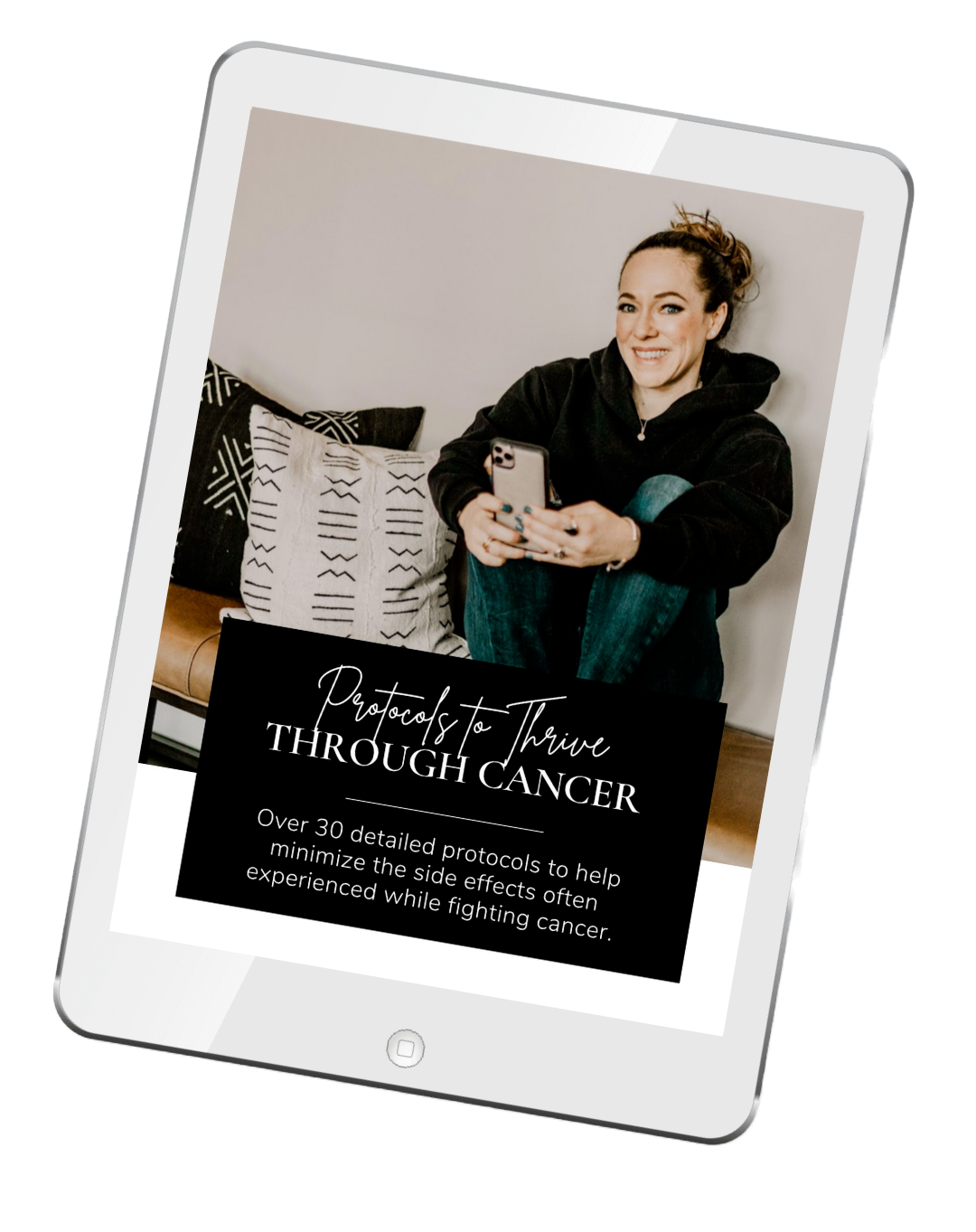If you just read that word, thermography, and thought, “what in the heck is that?”, don’t worry…you’re not alone. It actually BLOWS. MY. MND. that so many people have never even heard of this extremely incredible technology. I know it may seem “new,” but in reality, it’s been around for half a century!
This is actually the entire purpose of this post. If you’ve never heard of thermography, I want to help raise awareness, and if you have heard of it, I want to help you understand it better.
 My name is Louise Milleman. I’m a certified thermographic technician, and I received my certification through the Professional Academy of Clinical Thermology. I’m also the owner of InfraRead: Thermography for Wellness and a Wellness Advocate with dōTERRA International, which is how I met Season.
My name is Louise Milleman. I’m a certified thermographic technician, and I received my certification through the Professional Academy of Clinical Thermology. I’m also the owner of InfraRead: Thermography for Wellness and a Wellness Advocate with dōTERRA International, which is how I met Season.
I’ve spent the last 5 years of my life teaching others how to live a healthy, preventative and very proactive life. So, when I first heard of thermography, I was really excited to learn about it…like REALLY excited!
There was also a little part of me that was slightly frustrated. I thought, “How come I’ve never heard of thermography before? It’s INCREDIBLE!” The only answer I could come up with was because no one had ever told me about it. It was at that exact moment, I decided to dedicate the next however-long-it-takes to tell everyone I knew about this AMAZING technology.
So, what is Thermography?
Thermography, also known as digital infrared thermal imaging, uses a state-of-the-art infrared camera to measure the temperature of the skin’s surface. It’s an FDA-approved, non-invasive, contact-free, adjunctive screening tool that involves no radiation.
The thermal images taken can show an increase (or possibly a decrease) in temperature, which indicates to the interpreting doctors that a physiological process is taking place. Using the knowledge that your body is symmetrical, thermography detects where the abnormal hot or cold patterns may be. This helps in detecting early cancer and disease.
Ideally, when screenings begin at a healthy stage in life, we can detect those markers that indicate future disease…long before it becomes a disease! Early detection is key. So, starting at puberty, I believe you should consider having annual thermography scans.
Here are 5 reasons why…
1. Thermography is a safe and non-invasive procedure.
When I say safe, I mean that thermography isn’t going to harm your body in any way, shape or form.
Some traditional methods of screening have been known to squish, squash, poke, prod and/or compress your breasts when screening for breast cancer. This not only hurts, but it also creates a risk of rupturing any encapsulated cancerous tumors, which could then spread malignant cells into the bloodstream. In fact, only 22 pounds of pressure is needed to rupture a tumor, and today’s mammography equipment applies 42 pounds of pressure to the breasts!
Thermography does NOT do this. As a matter of fact, with thermography, no one even touches your body!
Also, these same traditional methods use ionizing radiation while screening for breast cancer. In fact, it uses anywhere from 40-70 millirems per mammogram, and even Functional Medicine Practitioner, Chris Kessler, says that “the cumulative effect of routine mammography screening may increase women’s risk of developing radiation-induced breast cancer.”
Thermography does NOT use any ionizing radiation. Instead, the cameras solely measure the heat signals coming off of your body, and a screening test is performed so it can detect potential health concerns or diseases. Thermography doesn’t cause any of the same diseases it’s screening for!
2. True early detection can be obtained.
When talking about disease in general, thermography is truly a preventative test. Let’s break this down into different types of diseases to help you understand a little better.
Breast Cancer
There are multiple screening tests available for breast cancer. The most common are mammograms, ultrasounds and thermograms.
Mammograms and ultrasounds are anatomical tests. This means that they’re looking for a physical structure (or tumor), and tumors must be a certain size (or density) for anatomical tests to detect them. Many times, these tumors have already been inside the body for years and years by the time they reach the required size or density. At this point, it isn’t very preventative, and these tests just let you know that you’ve got cancer.
Thermograms, on the other hand, are physiological tests. With thermography, we’re able to pick up the heat signatures that show changes occurring as early as the angiogenesis process, which simply put, is the development of new blood vessels. These blood vessels are what provide nutrients and oxygen to the tumor, allowing it to grow. These extra blood vessels also bring heat to the area which is why the digital infrared cameras can detect it as a “hot spot” or an area of concern. In fact, many times, these areas of concern can be detected years before some of the anatomical tests, and the earlier you can detect disease, the better chance you have at reversing it.
 Cerebrovascular Screening
Cerebrovascular Screening
Early detection of clogged carotid arteries can be life-saving for those with a higher risk of having a stroke. We’re able to detect this through the temperature readings on the cranial images of an upper or full body scan.
 Inflammation
Inflammation
Inflammation is the silent killer when it comes to your health. Some inflammation is healthy and even necessary for your body. However, when it’s chronic and excessive, it can become a problem and even a precursor to many major illnesses including, but not limited to, heart disease, diabetes, arthritis and cancer!
When you have inflammation, it can be a sign from your body that it’s fighting something. You may not know what it is you’re fighting since acute inflammation does not always present itself with symptoms. However, thermography can help uncover some of those medical issues and locate potential areas you may need to address.
3. It’s great for the entire body.
Many people only know thermography as an adjunctive screening for breast cancer. However, it offers so much more than that!
Due to thermography’s ability to detect inflammation, it has such a wide range of other applications. So, no matter whether you’re looking at specific systems of the body or specific health concerns, the truth is that your entire body is very connected. Therefore, I highly recommend starting with a full body scan to see what’s really going on.
In our lab, we offer breast, upper and full body scans. Here’s what each one entails:
Breast
This is a full adjunctive breast cancer screening. It comes with 6 complete images of the breast.
Upper Body
This exam includes your torso, a full breast cancer screening, thyroid screening, cerebrovascular screening and some cranial images that can give us information about dental health.
Full Body
This is a comprehensive exam. It includes everything in the upper body scan, as well as, your arms, shoulders, feet and the front, back and inside of the legs. It gives us great insight into your vascularity/veins and circulation.
You’ll find that each lab offers different options, but my point is that thermography is more than just a breast cancer screening tool. PLUS, men can enjoy the benefits too!
Also, thermography is approved by the FDA as an adjunctive screening tool for:
- Breast Cancer
- Thyroid Disorder
- Cerebrovascular Disease
- Neuromuscular Disorder
- Peripheral Muscular Disorder
Thermography scans also pick up on:
- Inflammation
- Dental pathologies
- Lymphatic congestion
- Hormone imbalances
- Nerve pathology
- Circulation issues
- Vein thrombosis
- Arthritis
- Pain
- Sluggish digestion
- And much more!
 4. It’s very affordable.
4. It’s very affordable.
Some people get caught up in the fact that thermography is not covered by conventional insurance. However, many people don’t realize how affordable it really is.
Depending on the thermography lab you visit, the prices vary. However, most labs offer very affordable options. At our lab, breast scans are only $249. Upper body scans are $399. And our full body scans are only $499!
Yes, technically these are one-time prices, but it’s very important to establish a baseline and follow-up annually if you choose to monitor your health utilizing thermography. And even though this may seem pricey to some, when you break down the cost of your annual upper body thermography scan, you’re only paying $33/month…or about $1 a day.
Ultimately, there’s a lot of value in each of these scan options, and honestly, the information discovered could be life-changing. Now, THAT is priceless!
Also, proactive and preventative health will ALWAYS be less expensive in the long run.
When you monitor your body throughout the years, you’re often able to detect things at such an early stage that lifestyle changes could easily turn your health around. If you don’t have the time to eat healthy now, imagine the time it will take away from you when you’re sick. If you don’t have the money to spend on true early detection methods, imagine the money it will cost you if you find your breast cancer at stage 3 or 4.
I’m not trying to instill fear or to simply book more thermography scans! I’m saying this because it’s factual! In fact, even if you choose to not utilize thermography, this will stand true.
So, when I talk about affordability, there’s so much more to consider than the dollar it costs today. Look at how it impacts your future because the answer is and always will be that being proactive and preventative will INEVITABLY save you in the long run!
5. When performed correctly, thermography has an accuracy rate of up to 97%.
First, let me state that there’s no screening tool to date that is 100% effective. Also, most of these screenings, like thermography, aren’t meant to be stand-alone tests. It’s when we’re able to combine technologies that we get the most amazing results!
That being said, thermography is up to 97% sensitive, according to the American Journal of Surgery! And because the risk of thermography is literally a BIG FAT ZERO and such a safe procedure, it stands true to state that it’s an extremely valuable adjunctive screening method.
One of my favorite things about thermography, as well as, one of the reasons it has such high sensitivity is because the density of the breast tissue doesn’t matter in its imaging technology. Since it’s a physiological test (versus an anatomical test), thermography simply detects the heat signatures of the body.
More specifically…
- Women under 40 aren’t recommended to get mammograms because their tissues are generally denser. This makes it substantially harder for anatomical tests to determine what’s an area of concern or what’s not.
- Women over 40 who have dense breast tissue are also now being given information from their mammography clinics to advise them of the density of their breasts so they can make informed decisions on whether or not they would like to pursue additional screening options.
- About half of all women have dense breasts, and without trying to create any undue anxiety, it does make it much harder for a mammogram to detect any cancer.
 Finally, when discussing our sensitivity, it’s important to mention that thermography must be performed correctly to be accurate. In fact, there are very specific protocols that need to be followed by the patient before a scan and very specific things technicians must have in place for their patients. So, when working with a thermography lab, always make sure you follow the protocols so you’ll receive the most accurate results.
Finally, when discussing our sensitivity, it’s important to mention that thermography must be performed correctly to be accurate. In fact, there are very specific protocols that need to be followed by the patient before a scan and very specific things technicians must have in place for their patients. So, when working with a thermography lab, always make sure you follow the protocols so you’ll receive the most accurate results.
In conclusion
I hope you’ve learned a lot, and I’m so grateful for the opportunity to share about this non-invasive, painless, radiation-free health screening tool. True early detection can be obtained for the entire body at an affordable price AND with a very high accuracy rate!
If this is your first time learning about thermography or you have any questions, please drop a comment below to share your thoughts or ask your questions. Feel free to also reach out to me personally. My contact information is below.
 Also, if you’d like to schedule an appointment, please know that our 4 offices are located in Northern California. However, we also travel once a month to areas where we have hosts who want to promote thermography in their local area! So, reach out to us to see if we’re coming to your local area or let us know if you’d like to be a host. Finally, if you want to learn more about breast thermography, click here to register for our FREE webinar!
Also, if you’d like to schedule an appointment, please know that our 4 offices are located in Northern California. However, we also travel once a month to areas where we have hosts who want to promote thermography in their local area! So, reach out to us to see if we’re coming to your local area or let us know if you’d like to be a host. Finally, if you want to learn more about breast thermography, click here to register for our FREE webinar!
Thanks so much for reading and have a healthy day!
 Louise Milleman, CTT is a baby-wearing, earth-loving, home-steading, tree-hugging, gentle-parenting, breastmilk-advocating, home-schooling, RV-living, freedom-fighting, world-traveling citizen of the entire world who happens to be obsessed with helping people stay healthy! She has spent the last 4 years of her life traveling the world educating others about how to live a vibrant, healthy life incorporating nature in as many ways as possible – and raising some free-range babies along the way! She feels so blessed to be living this life, ensuing her passion and sharing it all with the world!
Louise Milleman, CTT is a baby-wearing, earth-loving, home-steading, tree-hugging, gentle-parenting, breastmilk-advocating, home-schooling, RV-living, freedom-fighting, world-traveling citizen of the entire world who happens to be obsessed with helping people stay healthy! She has spent the last 4 years of her life traveling the world educating others about how to live a vibrant, healthy life incorporating nature in as many ways as possible – and raising some free-range babies along the way! She feels so blessed to be living this life, ensuing her passion and sharing it all with the world!
- Website: InfraReadThermography.com
- Facebook: Infraread: Thermography for Wellness
- Instagram: @InfrareadThermography
- Email: info@infrareadthermography.com
- Phone: 916-741-2522















I have had thermography breast screenings the last two years, but the center I was going to no longer does them and I’m having trouble locating a provider in my area. Do you know of any way to locate anywhere that offers thermographies? I live in Michigan (49071)
Hey Debbie…sorry I missed your comment earlier. I would just say to start with a search online. Thanks!
Hi Debbie, my chiropractor has this company come in once a year to do breast scans. You may be able to find one close to you – just do a search in your state! Hope this helps! https://www.herscan.com/
Same question as Debbie Hurst above, I found a place that did thermography and I had a whole body scan done about four years ago, but then they closed and I haven’t been able to find another one, I’d be willing to travel an hour or two to get this done yearly. I live in Elverson, Pennsylvania. Is there any way to get connected with a network of Thermography Clinics?
Sorry…I would just try looking at Google and seeing what comes up. Thanks!
I had no idea that thermography could be used to detect breast cancer as well as hormone imbalances. My mother told me that she felt a lump on her breast the other day and she’s kind of scared. I’ll recommend that she go to a medical facility that offers thermography to check for breast cancer.
Hi Skylar – I’ll be praying for you guys! And am so glad that you found this so helpful!
Will they be coming to Wisconsin anytime soon, do you know? I have a questionable lump on my breast, just had a mammogram done in June that showed nothing, but I have dense breast tissue. They told me I cannot get an ultrasound without getting a mammogram.
Hi Gayle – I’m not sure actually. You’ll need to reach out to them personally. Thanks!
Hi Season
Is there any thermography clinics you recommend in Kitchener Ontario. I have an appointment booked in November. Was having the breast and cranial one done but am thinking of having the whole body one done. Rather expensive compared to what I have seen here. $875. Can you provide any feet for me.
Thanks
Judy
Hi Judy…I’m sorry, but I don’t have a specific office I know of in that area. Thanks!
Thank you Season for this great content. Even though this is not a new technology, it is certainly making a big comeback with public awareness growing quickly. My wife Melinda is our technician and we are providing Thermography in the greater Nashville area. There is a big increase in demand happening. Would be curious to hear more about your experience as well. Are you able to provide a link to our page for people in our area? Would be greatly appreciated!